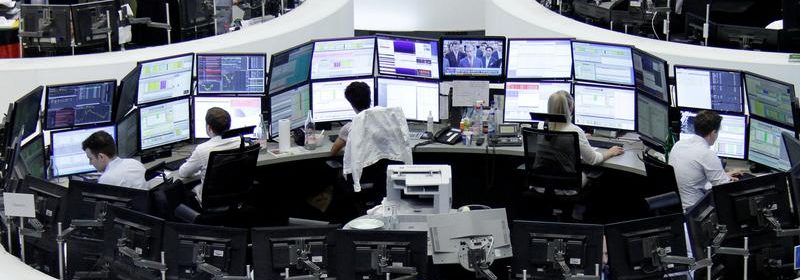Stocks bulls slow their charge, bitcoin back above $50,000

LONDON (Reuters) – Record-high world stocks slowed their charge on Thursday as concerns grew over the Chinese economy after a run of soft data, while the risk of a sub-par U.S. payrolls report kept the dollar on the defensive.
A raft of Asian manufacturing surveys overnight had suggested supply bottlenecks were still tightening, while in Europe Spanish unemployment fell again, Swiss GDP data disappointed and Hungary producer price inflation came in at an eye-watering 14.8%.
The pan-European STOXX 600 index crawled up 0.3% supported by travel, oil, car and chemicals companies [.EU] although signs of slowing global growth and a ninth day in the last 10 of gains for the euro limited the rises. [/FRX]
Wall Street futures were pointing modestly higher again while expectations that global stimulus will remain abundant also helped crytocurrency bitcoin get back above $50,000.
“The market seems to be believing Fed policymakers at the moment that inflation is transitory,” Legal & General Investment Management portfolio manager Justin Onuekwusi said, referring to signals that the U.S. central bank will only remove stimulus very gradually.
“That implies a lower-for-longer (interest rate) environment” he added, which benefits markets, especially technology stocks which have the most growth appeal.
The combined market caps of Google, Apple, Facebook and Amazon – dubbed GAFA by some acronmyn-loving analysts – is now larger than Japan’s entire Topix index, which has nearly 2,200 companies as well as London’s FTSE 100 and Germany’s DAX.
In Asia, the uncertainty over still-low vaccination rates in many ASEAN economies and China’s zero-tolerance COVID-19 strategy had kept Chinese blue-chips flat, though speculation about more fiscal stimulus offered some support.
MSCI’s broadest index of Asia-Pacific shares outside Japan eased 0.1% from a five-week high. Japan’s Nikkei added 0.3%, South Korea fell 1%, whereas Hong Kong’s battered tech index enjoyed a fourth day of unbroken gains.
Nasdaq futures and S&P 500 futures were starting to creep up too, having risen again on Wednesday despite some late wobbles and more evidence that major carmakers like General Motors were facing serious microchip shortages. [.N]
Wall Street has been preoccupied with second-guessing U.S. August jobs data due out on Friday, with the task made all the more uncertain by a disappointing reading on ADP private payrolls but a solid ISM survey of manufacturing.
Median forecasts are for a strong rise of 750,000 jobs, but they range from 375,000 to 1.02 million with the ADP report prompting speculation the risks are to the downside.
A soft non-farm payrolls number could be positive for risk assets, however, since it would lessen pressure for early tapering from the Federal Reserve.
“A print closer to 400k rather than 800k effectively means that the Fed’s condition of “further substantial progress” in the labour market will take longer to materialise, thus delaying the tapering decision from September to November,” said Rodrigo Catril, a senior FX strategist at NAB.
“Bad news in the labour market are good news for risk assets given the punchbowl will remain well liquefied for a bit longer.”
ECB HAWKS SWOOP
Amid the jobs chatter, 10-year Treasury yields eased back under 1.30% and away from the recent top of 1.375%, while the U.S. dollar index touched a one-month low.
The euro also reached its highest since early August at $1.1856 and was last steady at $1.1845.
The single currency was aided by hawkish comments from German central bank chief Jens Weidmann, who cautioned against inflation risks and called for a slowdown in the European Central Bank’s bond buying. ECB policymakers meet next week.
In contrast, the Bank of Japan shows no sign of tapering its massive purchases as the economy remains mired in a decades-long battle with deflation.
That all helped keep the dollar firm at 110.00 yen and comfortably within the tight 108.71 to 110.79 range that has lasted for the past two months.
Commodities would likely benefit from any delay in Fed tapering, helping underpin gold at $1,812 an ounce but short of resistance around $1,823.
Oil prices eased after OPEC+ agreed to stick to a policy of adding 400,000 barrels per day a month to the market, though it also defied pressure for an even larger increase. [O/R]
“Ignoring calls from the White House for further barrel increases, we think that OPEC+ will stay on this current course unless there is a clear deterioration in the demand outlook,” said analysts at RBC Capital Markets in a note.
“Moreover, we reiterate that if there is a price bias for the majority of the OPEC+ membership, it is to the upside given the high fiscal breakevens of member states.”
Brent regained some traction in London trading to sit at $71.60 a barrel, while U.S. crude bobbed around $68.50.
Source: Read Full Article
